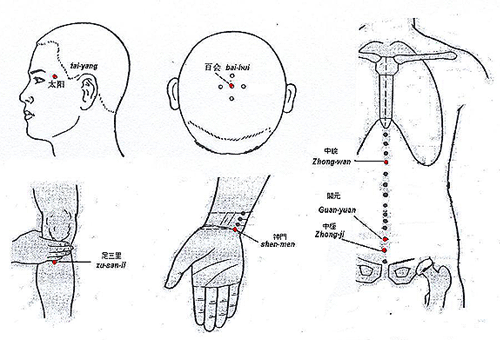Acupuncture Therapy for Premenstrual Syndrome (PMS)
Acupuncture is an important part of Traditional Chinese Medicine (TCM). Physicians use needles to stimulate certain points along meridians, which aims at regulating blood and qi activities and also organ functioning, so as to achieve a therapeutic effect. Acupuncture is a simple and safe treatment method, it is effective for a wide variety of diseases and conditions if applied under proper guidelines and techniques.
According to TCM theory, premenstrual syndrome (PMS) is mainly associated with liver qi stagnation and kidney yin deficiency, that lead to disturbances in blood and qi flows inside the body, and disharmonies of organ functioning. Acupuncture has the effect of opening up the meridians, harmonizing the blood and qi activities, strengthening the body’s self-healing power and dispelling the pathogenic factors, which can improve most of the PMS symptoms.
It may take a few cycles to show an overall improvement; however, alleviation of symptoms like bloating, cramps, headache and dizziness can be expected soon after the first month or even after the initial treatment. Guidelines for selecting acupoints are mostly based on syndrome differentiation, but the applying techniques may vary from physician to physician.
In each acupuncture session, techniques that are used by acupuncturist are far more than simply locating the right points on the body surface; the needles must be correctly inserted and manipulated to achieve the desired effects, which is termed as arrival of qi (de qi) in TCM. The manipulation of the needles involves techniques like lifting, thrusting, rotating, flicking or stroking. These needling techniques are divided into three categories:
- Reinforcing techniques are adopted to invigorate the body resistance and recuperate the under-functioning of the body. The skills are generally slow, gentle and short duration.
- Reducing techniques are adopted to eliminate the pathogens and suppress the hyper-functioning of the body. The techniques are generally rapid, forceful and long duration.
- Even techniques are adopted when there is no particular reason to use the above techniques.
Below is a protocol for PMS associated with liver qi stagnation:
Selected acupoints: zhong ji, tai yang, bai hui, shen men, Zhong wan, zu san li and guan yuan. Using even techniques until the individual feels the arrival of qi (de qi), and then the needles are retained for half an hour. Apply once a day, 15 days for one course.

Analysis: the major acupoint is zhong ji, which is located in the Conception Vessel and serves to regulate the qi movement of the whole body. The guan yuan also belongs to the Conception Vessel and serves to relieve abdominal distention and pain. The tai yang (nomeclature of extra point), bai hui (Governor Vessel) and shen men (Heart Meridian) help to relieve headache and insomnia. The zhong wan (Conception Vessel) and zu san li (Stomach Meridian) are indicated for enhancing qi activities and also reliving gastric discomfort and poor appetite.
Other suggested acupoints for the common PMS symptoms:
1. Mood Swings
Major acupoint selection: shen men, bai hui and san yin jiao
2. Breast Tenderness
Major acupoint selection: ru gen, gan shu and tan zhong
Assistant acupoint selection for severe qi stagnation: xing jian and tai chong
Assistant acupoint selection when accompanied with yin deficiency: pi shu, shen shu, tai xi and zhao hai
3. Headache
Major acupoint selection: tou wei, bai hui, feng chi, tai yang, he gu, zu san li and san yin jiao; apply with both reinforcing and reducing needling techniques.
Assistant acupoint selection: tai chong and xing gian when associated with hyperactive liver-fire, and mainly use reducing techniques.
Assistant acupoint selection: qu quan and fu liu when associated with blood deficiency, and mainly use even techniques.
4. Puffiness
Major acupoint selection: pi shu, shen shu, yin ling quan, shui fen, shui dao, pang guang shu and san yin jiao; use reinforcing techniques.
5. Mouth Sores
Major acupoint selection: shang yang and nei ting
Assistant acupoint selection: san yin jiao and yin ling quan when associated with damp-heat invasion.
Assistant acupoint selection: tai xi, zhao hai, jing jin and yu ye when associated with yin deficiency with virtual fire.
6. Hives
Major acupoint selection: qu chi, he gu, xue hai, wei zhong, ge shu and tin jing
For PMS symptoms, acupuncture treatment usually starts before the menstrual flow coming, it is suggested to apply every other day, each time keeps needle retention for 20 minutes, and 10 times are as one course.


